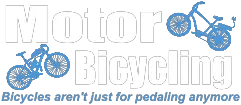Cabinfever1977
New Member
Yeah i have one of those black cat mufflers and they are quiet but real restrictive,so im working on modding mine.
Yeah i have one of those black cat mufflers and they are quiet but real restrictive,so im working on modding mine.
Thanks, i will try the hole, i would like to cut it in half or get a new one that actually comes apart.
i do have pics of a black muffler cut in half,maybe i'll study the pics of how its put together.

In my mind, a two stroke tach should be different than a four stroke tach, right? At least in calibration.
Case in point:
A two stroke fires everytime the motor is at top dead, but the four stroke fires every other time. So a tach calibrated for a four stoke accounts for that fact, ie four stroke RPM is the number of spark firings times two.
If you then throw that tach on a two stroke, it would indicate twice the RPM. ie two times for each fire. Hence it would read TWICE the RPM as the same tach on a four stroke.
Ain't that right guys?
Rich
Actually itchybird, A tach that that records the spark plug firing will still be correct weatherIn my mind, a two stroke tach should be different than a four stroke tach, right? At least in calibration.
Case in point:
A two stroke fires everytime the motor is at top dead, but the four stroke fires every other time. So a tach calibrated for a four stoke accounts for that fact, ie four stroke RPM is the number of spark firings times two.
If you then throw that tach on a two stroke, it would indicate twice the RPM. ie two times for each fire. Hence it would read TWICE the RPM as the same tach on a four stroke.
Ain't that right guys?
Rich
NO RPMs are the revolutions per minute of the flywheel 2 or 4 strokeIn my mind, a two stroke tach should be different than a four stroke tach, right? At least in calibration.
Case in point:
A two stroke fires everytime the motor is at top dead, but the four stroke fires every other time. So a tach calibrated for a four stoke accounts for that fact, ie four stroke RPM is the number of spark firings times two.
If you then throw that tach on a two stroke, it would indicate twice the RPM. ie two times for each fire. Hence it would read TWICE the RPM as the same tach on a four stroke.
Ain't that right guys?
Rich
With the stock port timing that these HT motors have, it is not possible to get them above about 9,000 rpm(on a 66cc). I have a big carb, big ports, SBP expansion chamber, and Accel spark wire, and the motor only revs an estimated 1,000 over the best stock setting. 41mph GPS verified 27 tooth sprocket. Anyone claiming Tach numbers of 14,000rpm should divide by two, and get real. My CR125 doesn't even rev that high, and my CR250 makes peak power around 8,500 in full race trim.

NO RPMs are the revolutions per minute of the flywheel 2 or 4 stroke


